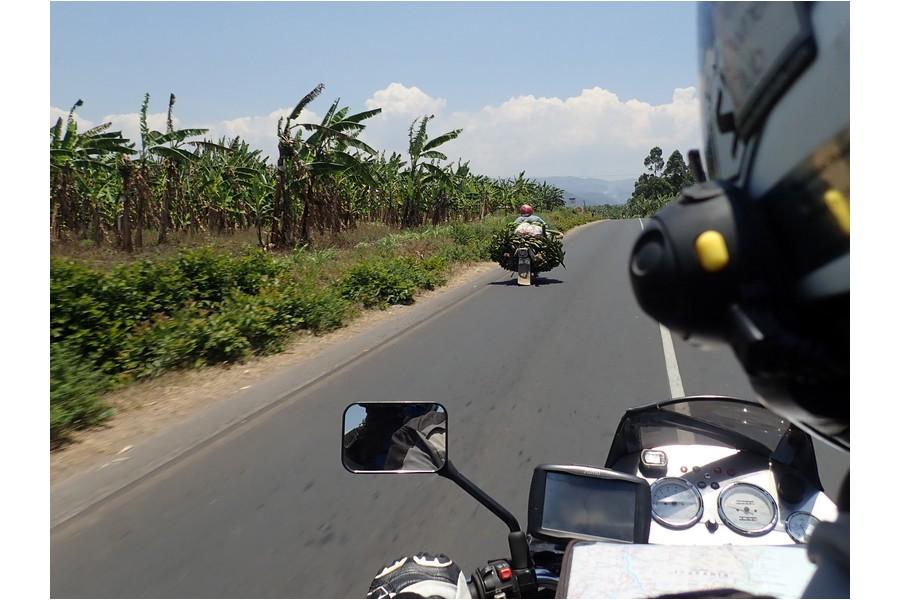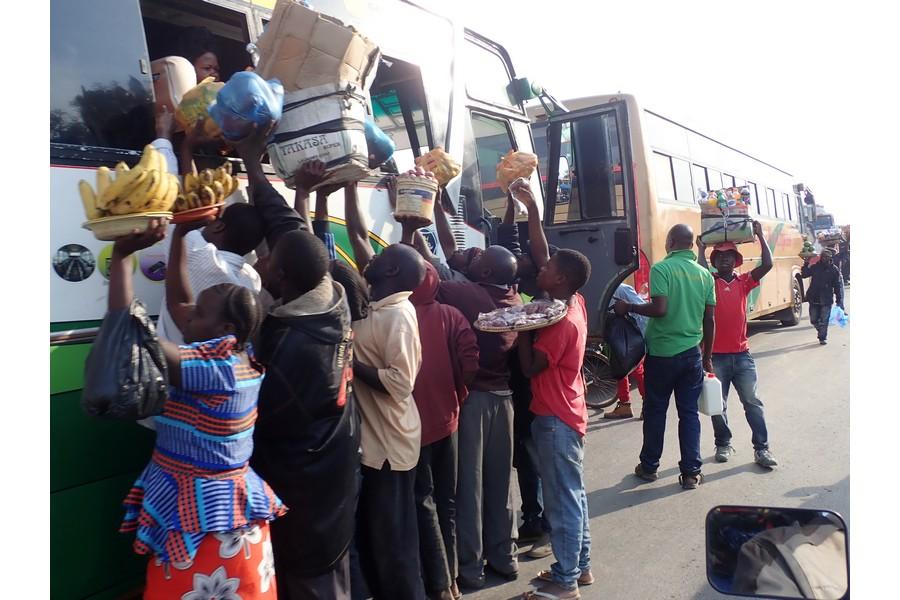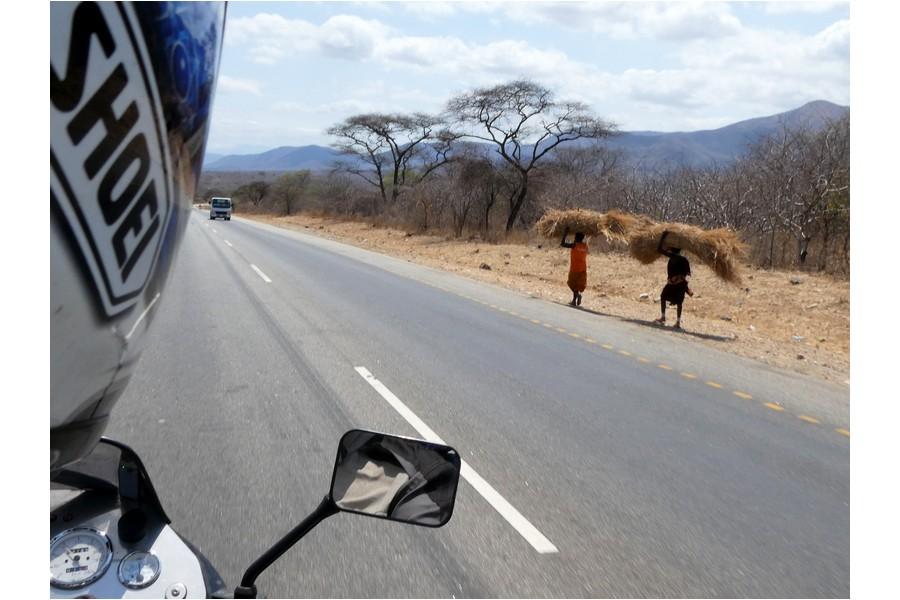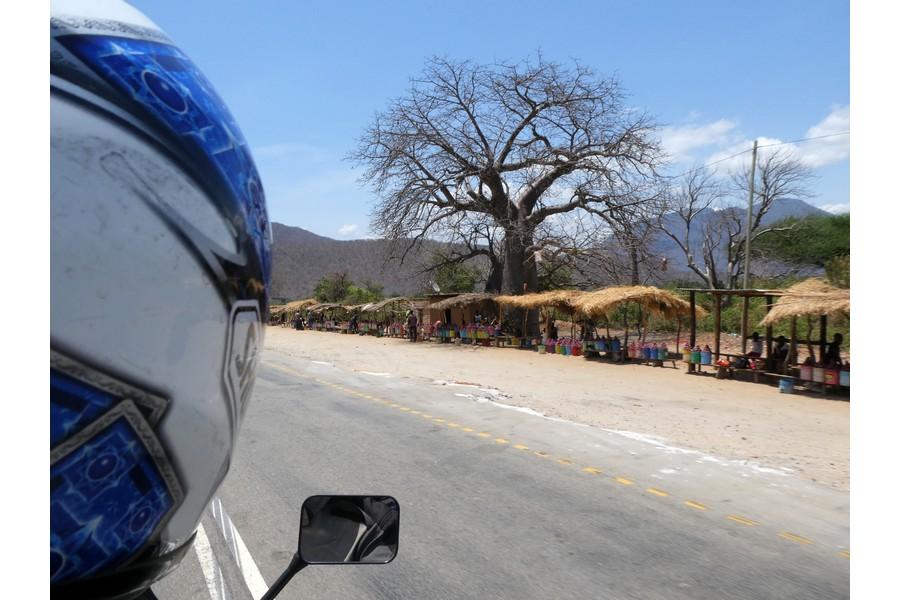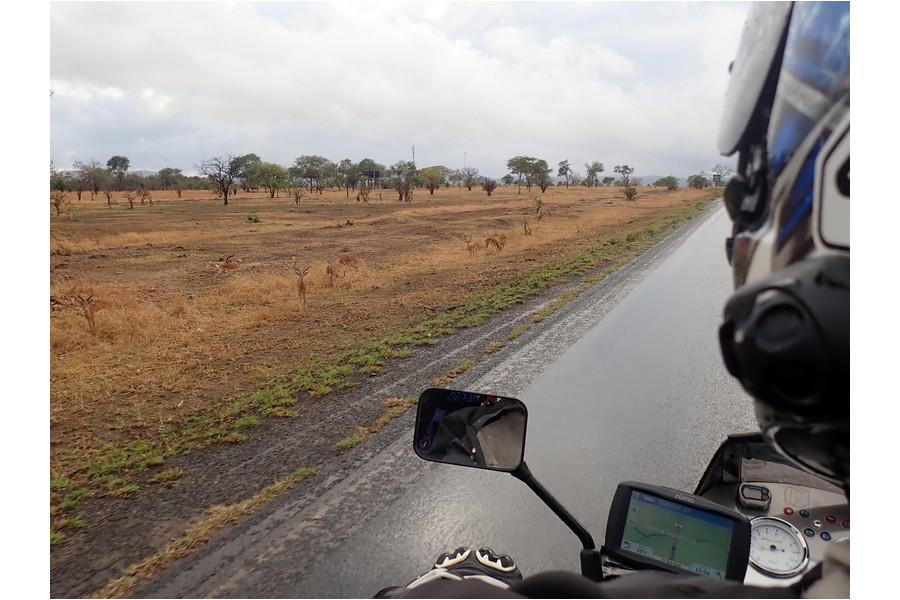Don’t be too quick to arrive
Country
As soon as we crossed the border from Malawi into Tanzania, so many things were noticeably different. Bicycles were replaced with Chinese 150cc single cylinder 4 stroke motorcycles (similar to small Honda’s from the 70’s). Tuk tuks, or I should say Bajajs, were everywhere and the atmosphere had a familiar Arabic and Muslim feel. Instantly the scenery was that of green hills rolling into the future, lively markets overflowing with produce, jacaranda-lined roads, and wildlife.
This is the second time we have considered avoiding a long multi day road trip to get to our destination. We were keen to get to Zanzibar, so the near 900km stretch between Mbeya in the south of Tanzania to Dar es Salaam where we would catch the ferry to Zanzibar, on the surface didn’t seem appealing.
We called into the Mbeya Train Station, a classic Soviet era building and open space, to ask about the Tazara train which travels 1700kms between the copper mines of Zambia to Dar es Salaam, via Mbeya. They did have bunks in a sleeper available for 30 USD per person, however the Guzzi would need to be crated. The additional cost of 150 USD and the drama involved, made us change our minds about trying to avoid the 900km stretch. Wandering around the train station, we were delighted to see our old friend, “The Pride of Africa” on the platform! We were told this was its last journey for the year.
Yet again, like the 1200kms from Victoria Falls in Zimbabwe to South Luangwa National Park in Zambia, we found the long ride absolutely fascinating.
Tanzania’s Southern Highlands are a major transit route from Malawi or Zambia, heading north. In addition to being beautiful, this region produces a large proportion of the country’s maize, coffee, tea and other crops. One other crop was everywhere to be seen and was for quite some time, a total mystery to us. The plants looked like overgrown pineapples without the fruit, they had a stump like a jack fruit, and were planted in rows that stretched forever. Finally we discovered these crops are Sisal plants!
“Sisal is the oldest commercial cash crop still in survival in Tanzania. In 1893 visionary German Agronomist Dr Richard Hindorf introduced the crop into the colony. The plant Agave sisalana was smuggled into Tanganyika from Yucatán, Mexico in the belly of a stuffed crocodile. Only 66 plants survived the journey but that was commercially viable to start the industry. The country's warm and semi-arid climate was perfect for the plant and production in the colony grew exponentially.”
In Mbeya, we stayed at a church-run community centre and Lydia, the co-ordinator, recommended two places to stay along the way to Dar, spaced approximately 300kms apart. Perfect! Upon our departure, it took a couple of hours to travel 50kms through Mbeya’s single file and clogged traffic, but the rest of the journey through the Southern Highlands, was just delightful.
First overnight stop was at The Old Farm House, Kisolanza. This 1930’s farm homestead, 50kms southwest of Iringa, is known for its impeccable wooden chalets, cottages and The Stables,where we stayed. Thankfully we didn’t have to share with any four legged creatures. The restaurant was housed in restored ruins and served fabulous farm fresh cuisine. Tick, first recommendation was great!
The next section of the trip was at a lower altitude. Having come from northern regions of Australia, we are used to seeing large Boabab trees. I think in Australia we might lazily drop a few letters and call our species the Boab! For most of the day we were treated to seeing baobab and acacia trees in every direction. Spectacular!
Second overnight stop was at the Tan-Swiss Lodge and Restaurant, Mikumi. The very inviting swimming pool, the tasty food in the restaurant, reliable wifi, and the comfy room, meant we stayed a little longer than expected! Tick, second recommendation…
The morning we left Tan-Swiss, the sky was black. It was the first time since South Africa that we needed to don our lighter rain jackets, and luckily blue and white appeared in front of us and the black soon slipped away to the right. For 50km’s we travelled through the Mikumi National Park. We had been warned about animals close to the road, but little did we expect to see zebra crossing right in front of us, a couple of giraffe to one side, and a number of warthogs, baboons, impala and wildebeest close to the road. Wow! There are plenty of police check points along roads in Tanzania, and at the end of the national park, a female police officer pulled us aside. We had inadvertently crossed a solid line when passing an extremely slow moving truck. She gave us a gentle warning but then asked “Did you see lion in the park? There was a lion in the park”… Ah, no…
Bus and truck drivers are a crazy breed who overtake across unbroken lines without consideration for any oncoming traffic even when going up-hill, and expect you to be the ones to get out of their way! Dale has become used to watching for tell-tale crazy signs, but then there are the drivers who catch you by surprise and you think What The?? Luckily our travels so far have been incident free. Not so for a few vehicles we have seen rolled off the edges of the roads…
Overlanding Africa is a Facebook site that we didn’t discover until well into our travels, but now find it a great resource for current travel information. We posted that we needed somewhere to store the Guzzi in Dar es Salaam whilst we visit Zanzibar. Denis replied that he had a small motorcycle workshop, we could leave the bike at his place, plus we could rent a room at his home for a nominal fee. Tick! Edward in Tanga, just up the coast from Dar, also replied and said that if we wanted a slower ferry to Zanzibar, we should consider leaving from Tanga instead of Dar. Zanzibar was beckoning, so we stayed at Denis and Susan’s place, then next morning caught a taxi to the ferry terminal…



